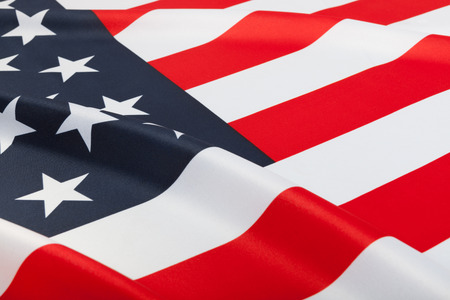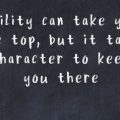1. Ancient Beginnings: Astrology in Babylon and Greece
Astrology, as we know it in the West today, has roots that reach back thousands of years to the ancient civilizations of Babylon and Greece. The story begins in Babylon (modern-day Iraq) around the second millennium BCE. Here, early astrologers studied the night sky, tracking the movement of planets and stars. They believed these celestial patterns could predict earthly events like floods, wars, and even the fate of kings.
The Birthplace: Babylonian Astrology
In ancient Babylon, astrology was mainly used for practical purposes—forecasting weather for farming or predicting omens for rulers. Babylonians created some of the first star charts and developed a zodiac based on twelve signs, which later influenced Western astrology.
| Babylonian Contributions | Description |
|---|---|
| Zodiac Signs | Divided the sky into 12 sections, each with its own sign |
| Star Charts | Mapped out positions of stars and planets for predictions |
| Planetary Omens | Linked planetary movements to events on Earth |
The Greek Transformation: Blending Science and Mythology
By around 400 BCE, Greek scholars encountered Babylonian astrology and put their own spin on it. The Greeks introduced ideas from philosophy and science, blending them with mythological stories. Famous thinkers like Ptolemy wrote books that organized astrological knowledge into a system we still use today.
Key Changes Made by Greeks:
- Personal Horoscopes: Greeks started making horoscopes not just for kings, but for everyday people.
- Elements and Qualities: Introduced fire, earth, air, and water elements to zodiac signs.
- Mathematical Calculations: Used math to chart birth charts more accurately.
Why This Matters Today
The mix of Babylonian observation and Greek philosophy laid the foundation for modern Western astrology. The zodiac signs and personal horoscopes we see in magazines or online all trace back to these ancient beginnings.
2. Medieval and Renaissance Interpretations
Astrology’s Transformation in Europe
During the Middle Ages, astrology underwent significant changes as it moved from ancient roots into European society. Scholars, monks, and even kings began to take an interest in the stars. Astrology became closely tied to everyday life, guiding decisions on everything from farming to warfare.
The Integration of Astrology with Science and Medicine
As universities developed across Europe, astrology found a place alongside astronomy, mathematics, and medicine. Physicians often studied astrology to understand how the positions of the planets could affect health and disease. Here’s a simple look at how astrology was used in medieval science and medicine:
| Field | Astrological Application |
|---|---|
| Medicine | Doctors timed treatments based on planetary movements; believed certain signs influenced different body parts |
| Astronomy | Astronomers calculated planetary positions for horoscopes and calendars |
| Agriculture | Farmers planted crops by lunar phases and zodiac signs |
| Weather Prediction | Astrologers forecasted weather events using star charts |
Religious Beliefs and Astrology
The Church had mixed feelings about astrology. Some Christian thinkers saw it as useful if practiced responsibly, while others worried it challenged free will or God’s power. Despite this tension, many church leaders still consulted astrologers for guidance on important matters.
The Renaissance: A Golden Age for Astrology
With the rise of the Renaissance, interest in astrology exploded among artists, scientists, and rulers. Famous figures like Queen Elizabeth I of England had personal astrologers. At this time, people believed that understanding the heavens could help unlock secrets about fate, personality, and the workings of nature itself.

3. From Enlightenment Skepticism to 19th Century Revival
The story of Western astrology took a dramatic turn during the Enlightenment in the 17th and 18th centuries. This was a time when scientific thinking, reason, and skepticism became popular across Europe and eventually America. Many intellectuals began to doubt traditional beliefs, including astrology. They saw it as superstition rather than science. People started relying more on mathematics, astronomy, and the scientific method to explain the universe.
The Decline of Astrology’s Influence
During the Enlightenment, astrology lost much of its mainstream influence. Leading thinkers like Isaac Newton and Voltaire openly criticized astrology. Universities dropped astrology from their courses, and newspapers focused less on horoscopes. Astrology was pushed to the fringes of society. Here’s a simple comparison:
| Before the Enlightenment | During the Enlightenment | |
|---|---|---|
| Mainstream Acceptance | Yes – taught at universities; used by rulers | No – seen as superstition; removed from schools |
| Public Interest | High – part of daily life | Low – replaced by science and reason |
| Role in Society | Respected advisors and practitioners | Marginalized or ignored |
The Victorian-Era Revival in America and Europe
Astrology made a surprising comeback in the 19th century, especially during the Victorian era. Both in Europe and America, people became interested again in spiritualism, mysticism, and the occult. This was partly a reaction to rapid industrialization and a desire for personal meaning beyond science.
What Sparked the Revival?
- The Rise of Spiritual Movements: Groups like Theosophists and spiritualists promoted astrology as part of a larger search for truth.
- New Printing Technology: Books, magazines, and almanacs about astrology became widely available to regular people.
- A Sense of Wonder: As cities grew and technology advanced, many Americans looked for ways to reconnect with nature and the cosmos.
Astrology in Everyday Life (1800s)
- Horoscope columns appeared in popular newspapers and magazines.
- Astrological societies were formed in New York, Boston, London, and Paris.
- People consulted astrologers for advice on marriage, business, and travel.
This period set the stage for astrologys even bigger popularity boom in modern America during the 20th century.
4. Astrology in Modern American Culture
The Rise of Newspaper Horoscopes
Astrology became a household topic in America during the 20th century, especially with the introduction of newspaper horoscopes. These daily and weekly predictions allowed millions of Americans to start their mornings with a quick check of what the stars had to say. The simple sun sign horoscope columns made astrology easy and fun, turning it into a daily ritual for many.
Popular Features of Newspaper Horoscopes
| Feature | Description |
|---|---|
| Sun Sign Predictions | Personalized advice based on your zodiac sign |
| Love and Relationships | Tips for romance and friendship |
| Career Guidance | Work and money-related insights |
| Lucky Numbers & Colors | Fun additions to try your luck for the day |
The New Age Movement and Astrology’s Popularity Boom
The 1960s and 1970s saw astrology become a central part of the American New Age movement. People were looking for new spiritual paths outside traditional religion, and astrology offered an alternative way to explore personality, relationships, and destiny. During this time, birth charts, planetary alignments, and compatibility readings became increasingly popular at bookstores, fairs, and even parties.
Key Elements of New Age Astrology in America
- Personalized Natal Charts: Detailed maps based on your exact birth time and place.
- Compatibility Readings: Comparing birth charts for love or business partnerships.
- Workshops & Group Sessions: Learning about astrology together as a community activity.
- Integration with Other Practices: Combining astrology with tarot, crystals, or meditation.
The Digital Era: Astrology Apps and Social Media
In the 21st century, astrology made another leap—this time onto smartphones and social media platforms. Digital apps like Co–Star, The Pattern, and Sanctuary let users generate detailed charts in seconds. Social media influencers share memes about Mercury retrograde or “Big Three” signs (Sun, Moon, Rising), helping astrology reach a younger audience who enjoy sharing their zodiac traits online.
How Digital Tools Changed Astrology in America:
| Aspect | Traditional Astrology | Digital Astrology Apps |
|---|---|---|
| User Experience | Papers, books, personal readings | Instant digital charts & notifications |
| Accessibility | Takes time & expertise to learn basics | User-friendly interfaces for all ages |
| Community Building | Astrology clubs & meetups in-person only | Online forums & social media groups connect fans nationwide |
Today, astrology is more than just newspaper columns; it’s an everyday conversation starter among friends, a trending topic online, and a source of comfort or entertainment. Whether checking an app before a big date or sharing memes about zodiac signs with friends, astrology remains woven into the fabric of modern American culture.
5. The Contemporary Landscape: Science, Skepticism, and Popularity
Today, astrology is everywhere in American life. From daily horoscopes on popular websites to TikTok videos explaining Mercury retrograde, astrology has become a cultural phenomenon. But with this popularity comes a fair share of debate. Is astrology a legitimate practice or just entertainment? How do Americans really feel about it? Let’s take a closer look at these current conversations.
Astrology vs. Science: Ongoing Debates
One of the biggest discussions around astrology in the U.S. centers on its scientific legitimacy. Most scientists agree that astrology lacks evidence-based support. Studies haven’t found reliable links between star positions and personality or life events. Still, many people enjoy astrology for reasons beyond science—they see it as fun, comforting, or even insightful.
| Perspective | Common Arguments |
|---|---|
| Scientific Community | No scientific basis; results not replicable; considered a pseudoscience |
| Astrology Supporters | Offers personal meaning; helps with self-reflection; connects people socially |
| Skeptics | Fun and harmless as entertainment but not reliable for making decisions |
The Role of Astrology in American Pop Culture
Astrology’s popularity is especially high among younger generations in the U.S., who use it as a tool for self-expression and identity. Social media platforms like Instagram and Twitter are full of memes and posts about zodiac signs. Apps like Co–Star and The Pattern have millions of downloads. For many Americans, knowing someone’s sun sign is as common as asking about their favorite music.
Why Do People Love Astrology Today?
- Relatable Content: Horoscopes and zodiac memes are easy to share and often feel personally meaningful.
- Community: Discussing signs creates an instant connection—“You’re a Scorpio? That explains so much!”
- Self-Discovery: Astrology offers a language for exploring emotions, relationships, and life changes.
- Nostalgia: For some, reading horoscopes is a tradition passed down from family members.
Astrology, Wellness, and Identity Trends
Astrology intersects with America’s booming wellness industry. Many people combine astrology with mindfulness practices, yoga, meditation, or journaling. It fits into broader trends focused on mental health and self-care. Some therapists even discuss birth charts with clients as part of holistic well-being.
| Wellness Practice | Astrology’s Role |
|---|---|
| Meditation & Mindfulness | Zodiac insights used for setting intentions or understanding emotional cycles |
| Therapy & Counseling | A tool for opening conversations about personality traits or challenges |
| Social Identity & Community Building | Zodiac groups foster connection based on shared sign characteristics |
| Personal Journaling & Self-Reflection | A framework for exploring goals and life transitions through astrological timing (like New Moons) |
A Diverse Range of Beliefs in Modern America
The American attitude toward astrology is diverse. Some see it as serious guidance, others as playful entertainment, and many fall somewhere in between. What’s clear is that astrology—whether you believe in it fully or just read your horoscope for fun—remains a visible and evolving part of American culture today.


